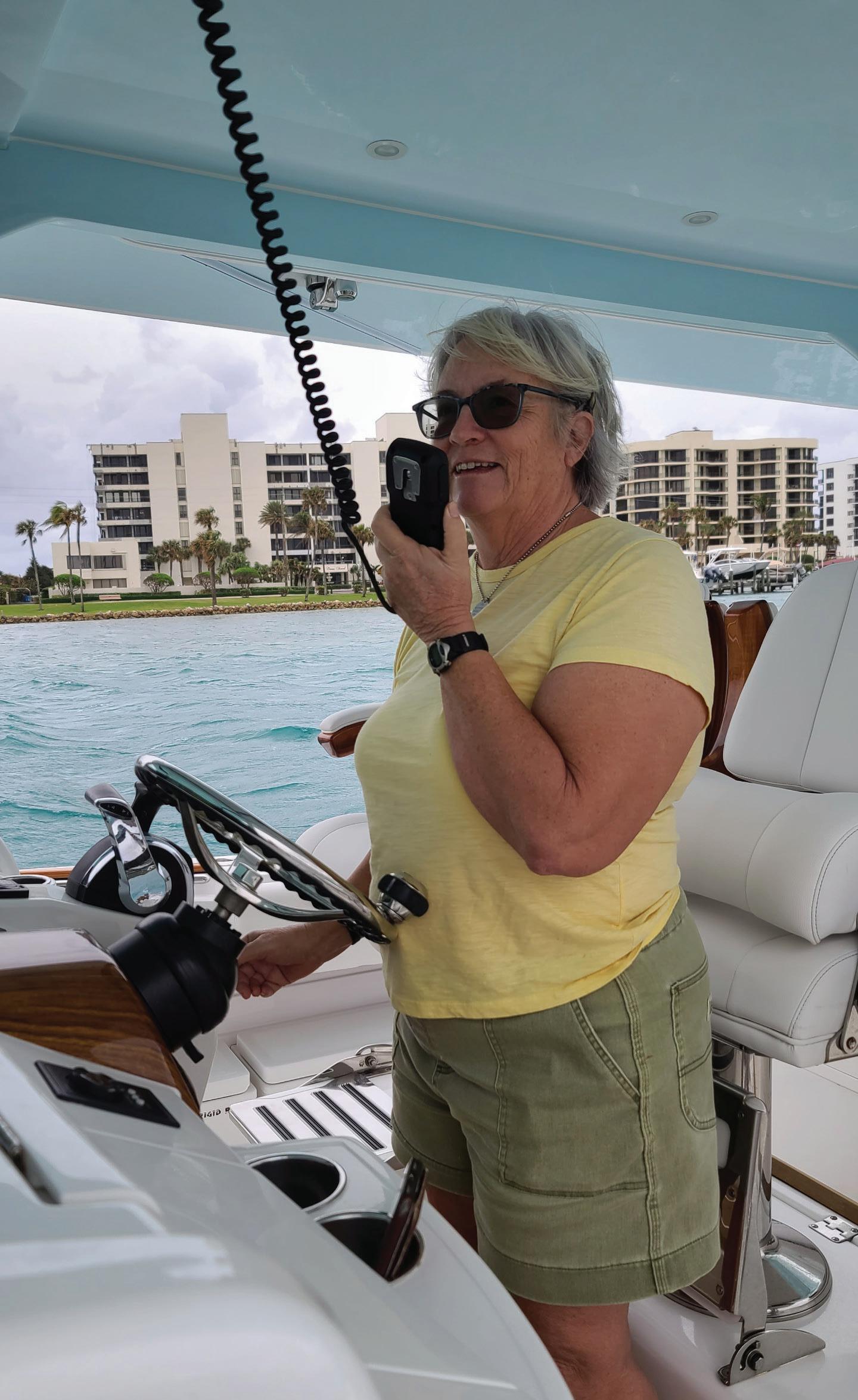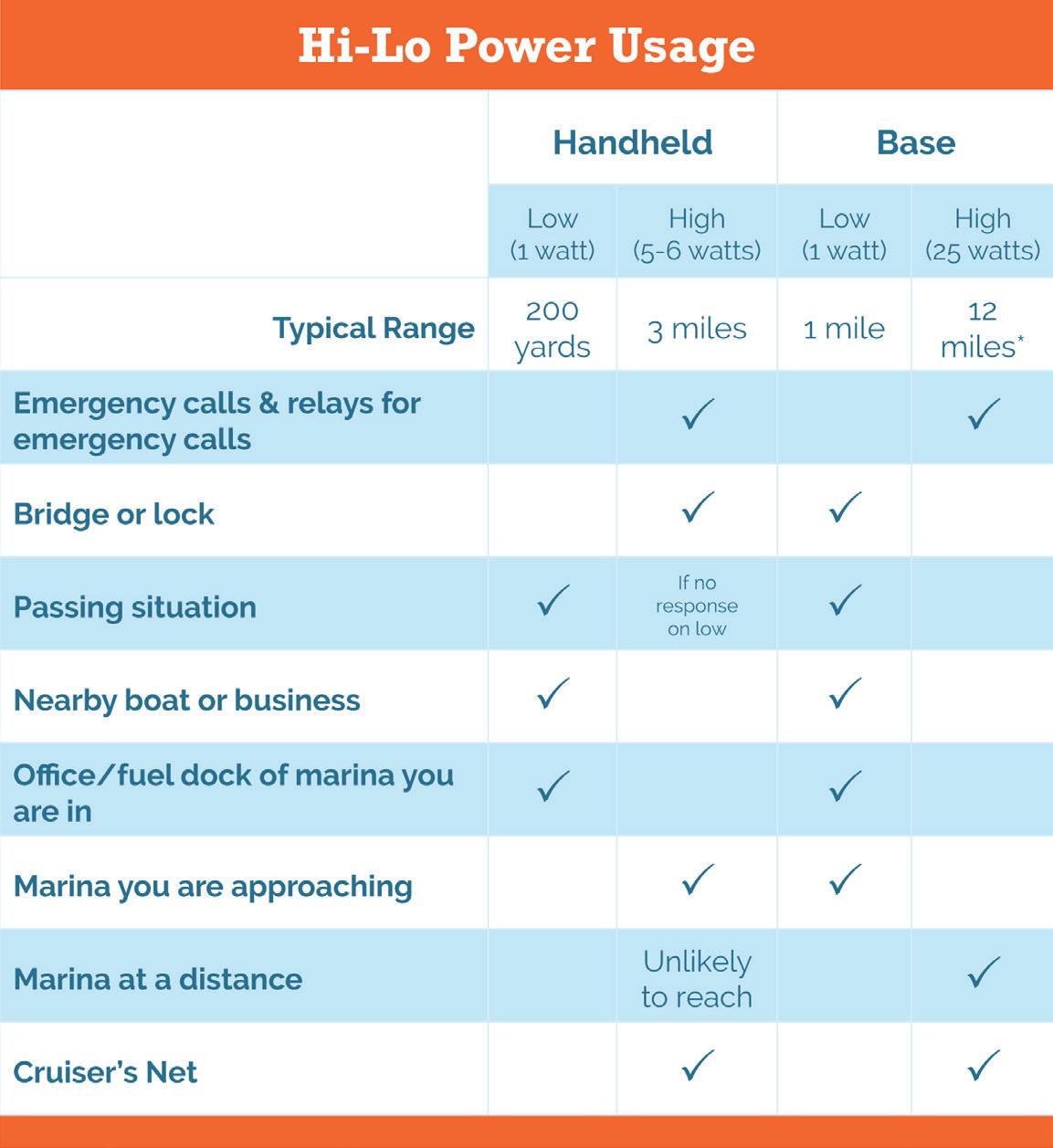
4 minute read
2024_01_Summer_Scuttlebutt Southeast_The Boat Galley
GREAT VHF COMMUNICATIONS
The VHF radio is the primary way boaters communicate with one another (particularly if they don’t know each other), bridges and often marinas, not to mention call for help. What does it take for crisp, clear communication that gets the job done?
Wind Noise
Wind hitting your radio mic makes a lot of noise in your transmission—rumbly, freight-train like noise that drowns you out no matter how strong your signal might be. It’s funny but usually if someone complains that they can’t hear you over the engine noise, it’s actually wind noise that they’re hearing.
You might be able to turn your back to the wind, but it’s even better to try to get into protected space such as behind the windshield or dodger. Throttling back so that your boat speed is causing less “wind” can also help.
How To Speak
If someone is having a hard time hearing you, don’t try to talk louder or yell. Slowing down your speech will help far more. We’ve all heard the high-speed Coast Guard announcements where you can only catch every other word . . . or less. Don’t emulate them! Leaving a tiny pause between each word helps immeasurably.
To be well understood you have to speak clearly and directly into the mic, but you also need to try to retain natural speech patterns. Most attempts to hyper-enunciate words don’t lead to better understanding. If you’re saying “foggy” and they’re hearing it as “doggy,” spell it phonetically: foxtrot-oscar-golf-golf-yankee.
If you have trouble remembering the phonetic alphabet, keep a cheat sheet next to the radio.
Push To Talk (PTT)
To transmit on a VHF radio, you must push the “talk” button in. It’s not activated until fully pushed in. So be sure to fully press the mic key in before you start to speak. That is push it, wait a beat, then start talking. Far too many people start talking as they are starting to push the button in, and thus cut off the first word or two of their transmission.
Using the Right Power
If there is more than one transmission on a given channel, the strongest one will be heard. Usually, one will overpower the other; sometimes you may hear a mutilated mess of both.
VHF radios all have a hi/low power option. So, theoretically, you could just always leave your radio on high power and hope to always be the strongest radio so that your message gets through.
High power on a good radio with a tall antenna can give you a range of 25 miles or more. The thing is, many times we don’t need to contact someone anywhere near that far away. But if we use high power on a base station radio, we’ll tie up that channel for hundreds or maybe even thousands of boats within that radius. It’s especially a problem in areas with lots of boats all calling each other and various bridges, as can happen on the ICW.
Instead, choosing low power is the better choice when calling anyone that you think is less than a mile away: the marina office or fuel dock from your slip, the bridge that you can see in the distance, or another boat in the anchorage, for example. They’ll be able to hear you just fine but boats further away won’t, and you won’t tie up the airwaves for important or even emergency calls.
The Bottom Line
Your boat’s VHF radio is an important bit of gear out on the water, both for fun and as your safety lifeline. Clear communications are key and these four items will ensure great results for you – and the other boaters around you.
About the Author
Carolyn Shearlock and her team at The Boat Galley are all longtime boaters, dedicating to making boat life simpler, easier, and just plain better. VHF skills are a part of that, and you can find their VHF Quick Reference (which includes the phonetic alphabet and hi/low power chart among other things) at theboatgalley.com/vhfref. It’s also available on Amazon.






